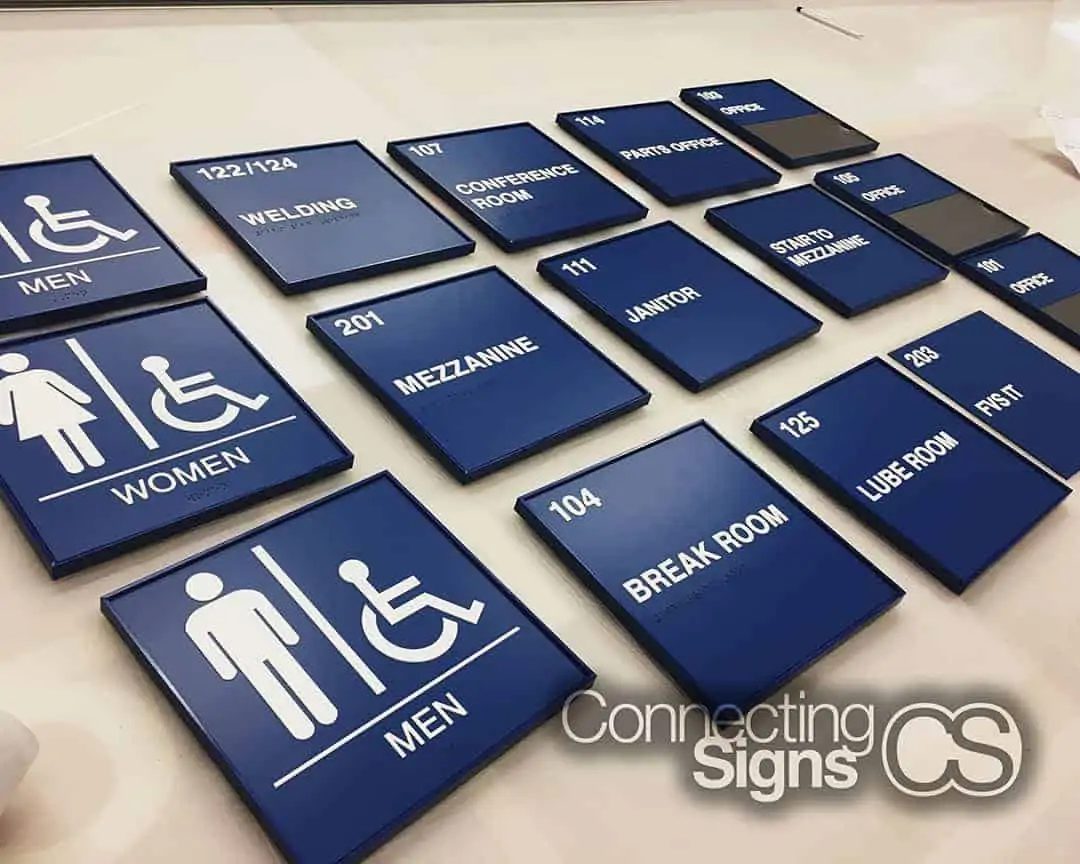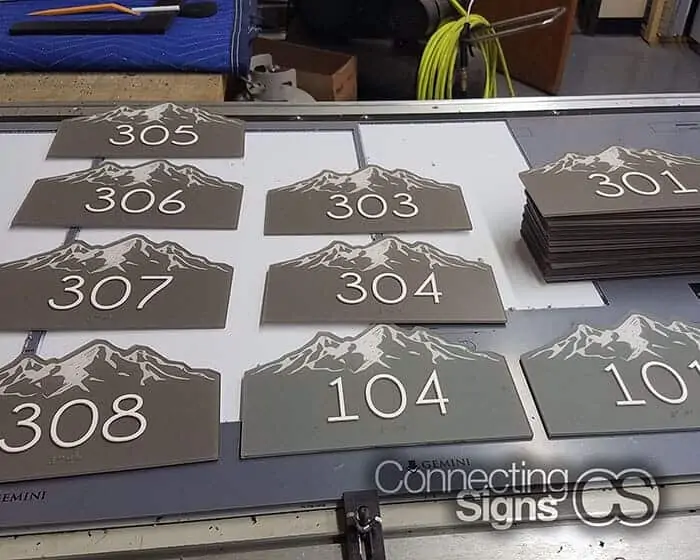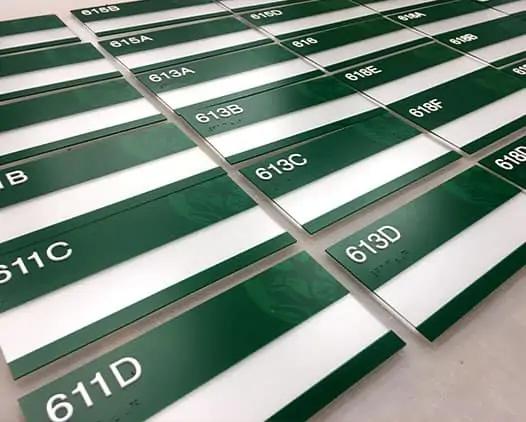 Why is it necessary for public spaces to be accessible to all? The Americans with Disabilities Act (ADA) was first signed into law on July 26, 1990, by President George H.W. Bush. The ADA is an exhaustive catalog of specifications for architectural buildings and public spaces intended to make those areas more accessible for people of all abilities. Among the many items discussed in the ADA is the topic of compliant signage. Signage for accessible environmental design means that the verbiage on wayfinding, permanent exits, and restrooms needs to be accessible to people of all abilities.
Why is it necessary for public spaces to be accessible to all? The Americans with Disabilities Act (ADA) was first signed into law on July 26, 1990, by President George H.W. Bush. The ADA is an exhaustive catalog of specifications for architectural buildings and public spaces intended to make those areas more accessible for people of all abilities. Among the many items discussed in the ADA is the topic of compliant signage. Signage for accessible environmental design means that the verbiage on wayfinding, permanent exits, and restrooms needs to be accessible to people of all abilities.
Signage Requirements for ADA Compliance
Signage requirements for ADA:
- Visual letters and tactile letters are required
- Tactile letters must have accompanying grade II braille
- Signs that are designed to be read by touch should not have sharp edges
- Tactile (raised) lettering must be 1/32” in thickness
- Tactile lettering must be featured in an easy to read sans-serif font with all uppercase letters
- Minimum letter height: 5/8”
- Maximum letter height: 2”
- The bottom edge of tactile characters must be mounted 48” to 60” above the floor
Additional rules can be found here.
Choosing Materials for ADA Signage
Another important requirement of ADA compliant signage is a contrasting background to ensure that the visual text is easy to read. The most visible color combinations are white text on a black background or black text on a white background. ADA signs don’t always have to be featured in black and white, however. The use of contrasting colors is also a great way to ensure that the visual text is easy to see and read. Creating a contrasting background/foreground with textured materials like brushed aluminum or wood can also effectively help wayfinding and room signs stand out.
ADA Environmental Signage Design Tips
Signage for accessible environmental design may seem simple with all the provided rules and requirements, but don’t be tricked into thinking it’s a simple task. A full ADA sign schedule can be complex and extensive. Here are some tips for designing ADA signs:
- Use easy to read sans-serif fonts
- Adjust text kerning to improve readability
- Avoid complex imagery and photos
- Be clear and specific with word choices
- Create interesting shapes or match the interior design aesthetic by layering different acrylic backer panels
- For wayfinding signs, lead the text with the corresponding directional arrow
Find the Right Sign Partner to Produce ADA Environmental Signage
The most important phase of getting environmental ADA signage planned and produced is partnering with a trusted and reputable sign company to design the layout, produce, and install the signs. A sign company that will guarantee their work and is flexible enough to ship and install anywhere in the country can be hard to find but luckily you’re reading a blog from one of the best! Request a quote here and get started on your ADA environmental sign project today!



